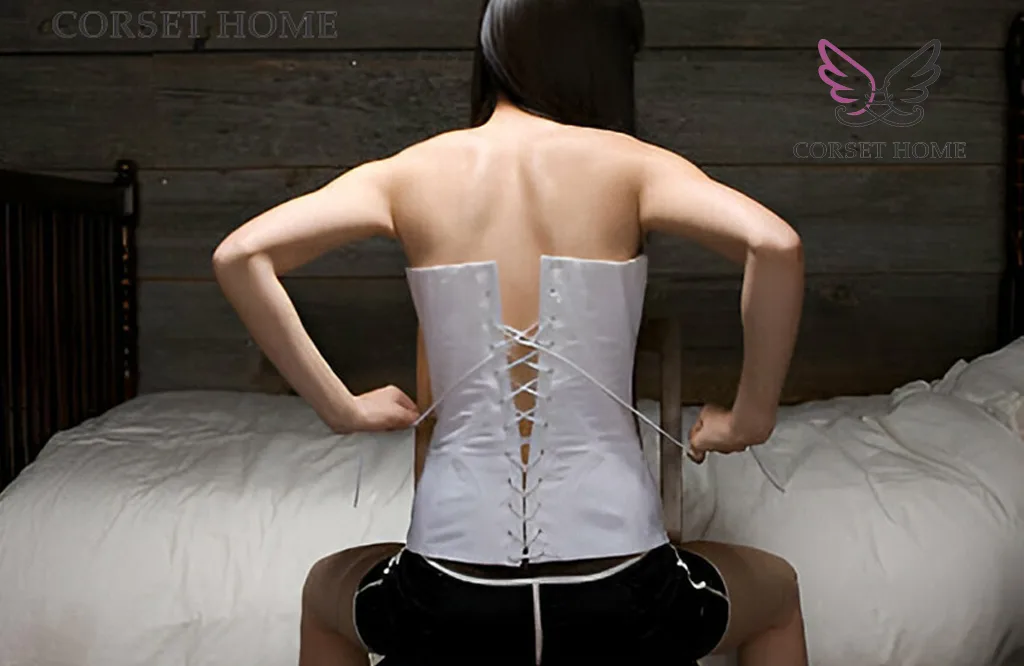Corsets have been a staple of fashion for centuries, evolving from strict undergarments to versatile, fashionable pieces. Whether you’re new to corsetry or looking to refine your skills, understanding how to use a corset properly is essential. In this guide, we’ll explore the different types of corsets, how to choose the right one for your needs, and the steps to wear and maintain your corset. By the end, you’ll be well-equipped to make the most out of this timeless garment.
How to Use Corset: A Comprehensive Guide
Understanding Different Types of Corsets
Corsets come in various styles, each designed for specific purposes. The two primary types are underbust and overbust corsets.
Underbust Corsets: These corsets sit just below the bust, providing support to the waist and lower torso. They are versatile and can be worn over or under clothing, making them popular for waist training and fashion purposes.
Overbust Corsets: Covering the bust and extending down to the hips, overbust corsets provide more support and can be worn as standalone tops. They are ideal for creating dramatic hourglass figures and are often used in costume design and high fashion.
Other variations include:
- Waist Cinchers: Shorter than traditional corsets, waist cinchers focus on slimming the waistline without covering the bust or hips.
- Corset Dresses: These combine the structure of a corset with the silhouette of a dress, offering a unique and stylish option for formal occasions.
Choosing the Right Corset
Selecting the right corset involves considering your goals, body type, and personal style. Here are some tips to help you choose:
- Purpose: Determine why you want to wear a corset. For waist training, a sturdy underbust corset with steel boning is ideal. For fashion, you might prefer a leather corset or a beautifully designed overbust corset.
- Fit: Measure your waist accurately and consult size charts provided by corset manufacturers. A well-fitting corset should be snug but not painfully tight.
- Material: Corsets come in various materials, including satin, cotton, and leather. Each material has its own feel and look, so choose one that suits your preferences and occasion.
- Boning: Look for corsets with steel boning if you need significant support and shaping. Plastic boning is lighter and more flexible but may not provide the same level of support.
How to Wear a Corset
Wearing a corset correctly is crucial for comfort and effectiveness. Follow these steps to ensure a proper fit:
- Preparation: Ensure your skin is clean and dry. Applying a thin layer of body lotion can help prevent irritation.
- Loosening: Before putting on the corset, fully loosen the laces at the back. This makes it easier to position the corset around your torso.
- Positioning: Place the corset around your waist, ensuring the busk (front closure) is centered. Fasten the busk from the bottom up, making sure each hook and loop is securely fastened.
- Lacing: Begin tightening the laces from the top and bottom towards the center. Alternate between tightening the top and bottom sections to ensure even pressure. Take your time and adjust until the corset feels snug but not too tight.
- Adjusting: Stand up and move around to check the fit. The corset should feel supportive but allow for comfortable breathing and movement. Make any necessary adjustments to the laces.
Wearing a Corset for Different Occasions
Corsets are incredibly versatile and can be styled for various occasions. Here are some ideas:
Everyday Wear: For daily use, opt for a simple underbust corset that can be worn under your clothes. Pair it with high-waisted skirts or trousers for a polished look.
Evening Wear: For special occasions, an overbust corset can be a stunning choice. Pair it with a flowing skirt or tailored pants for an elegant ensemble.
Casual Outings: For a more casual look, consider wearing a corset over a blouse or dress. This creates a chic, layered appearance perfect for a day out with friends.
Costume and Cosplay: Corsets are popular in costume design. Whether you’re dressing up for a themed party or cosplay event, a corset can help you achieve an authentic and dramatic look.
Maintaining Your Corset
Proper care and maintenance will extend the life of your corset and keep it looking its best. Follow these tips to maintain your corset:
- Cleaning: Always refer to the manufacturer’s care instructions. Most corsets should be spot-cleaned with a damp cloth and mild detergent. Avoid submerging your corset in water or using harsh chemicals.
- Drying: Allow your corset to air dry completely before wearing or storing it. Avoid direct sunlight or heat sources, as they can damage the fabric and boning.
- Storing: Store your corset in a cool, dry place. Lay it flat or hang it using padded hangers to prevent creasing. Avoid folding your corset, as this can cause permanent wrinkles.
- Lacing Maintenance: Regularly check the laces for signs of wear and tear. Replace them if they become frayed or damaged to ensure a secure fit.
FAQs
Q1: How long should I wear a corset each day?
A: For beginners, it’s best to start with 1-2 hours a day and gradually increase the duration as your body adjusts. Experienced wearers can wear a corset for up to 8-10 hours a day. Always listen to your body and take breaks if needed.
Q2: Can wearing a corset cause any health issues?
A: When worn correctly and for appropriate durations, corsets are generally safe. However, wearing a corset that is too tight or for extended periods can lead to discomfort, breathing difficulties, and digestive issues. Consult with a healthcare professional if you have any concerns.
Q3: Can I wear a corset while exercising?
A: It’s not recommended to wear a corset during intense physical activities, as it can restrict movement and breathing. For light exercises like walking or stretching, you may wear a waist cincher designed for workouts, but always prioritize comfort and safety.
Q4: How do I know if my corset is too tight?
A: A corset is too tight if you experience pain, difficulty breathing, or significant discomfort. You should be able to breathe deeply and move comfortably. If you notice any of these signs, loosen the laces or remove the corset.
Q5: Can men wear corsets?
A: Absolutely! Corsets are not limited by gender. Many men wear corsets for support, waist training, and fashion purposes. The key is finding a corset that fits well and meets your needs.
Q6: How do I break in a new corset?
A: Breaking in a new corset, also known as seasoning, involves wearing it for short periods (1-2 hours) over several days to allow the fabric and boning to mold to your body. Gradually increase the wearing time as the corset becomes more comfortable.
Q7: What should I wear under a corset?
A: Wearing a thin, fitted garment like a camisole or corset liner under your corset can help protect your skin and keep the corset clean. Avoid bulky clothing, as it can create uneven pressure and discomfort.
Conclusion
Using a corset can enhance your silhouette, boost your confidence, and add a touch of elegance to your wardrobe. By choosing the right corset, wearing it properly, and maintaining it with care, you can enjoy the many benefits of this timeless garment. Remember, comfort and safety should always be your top priorities. With the tips and information provided in this guide, you’re now ready to explore the world of corsetry with confidence.
For all your corset needs, visit Corset Home – your ultimate destination for high-quality corsets and expert advice. Whether you’re looking for a leather corset for a special occasion or a simple underbust corset for everyday wear, we have something for everyone. Happy corseting!

